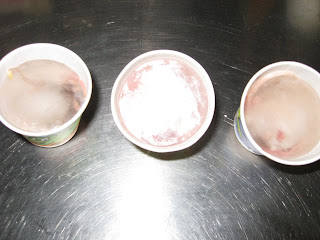AH SNOW….
The World Bird Sanctuary upper site in snow
Remember when you were little and snow meant hot chocolate, no school, sledding and snowball fights? Just endless white as far as the eye could see with a light glaze of ice to really enforce the ideal wintry scene. I would always jump for joy when I saw those big fat flakes of frozen fun…then I got older. When you are older snow means traffic, scraping, freezing your hands off and shoveling. However, I never truly understood the meaning of winter until I moved to the World Bird Sanctuary.
I love living on World Bird Sanctuary grounds; being surrounded by birds 24/7 is great and the commute cannot be beat (I work in the building literally across the road from my apartment). There is, however, one minor drawback, and that is winter.
Hailing from Pennsylvania I am no stranger to snow and blizzards, and going to school in Indiana acclimated me to the wonder that is the ice storm; so when I started my internship with the World Bird Sanctuary in the middle of February I thought I was well prepared as far as wintry weather.
The WBS Lower Site - devoid of vehicles, which have all been moved to the upper site
How naïve I was…the behind the scenes area where I live and work is at the bottom of a giant hill accessed via a gravel road …a hill which becomes nearly impassable once it snows (unless you have four-wheel drive and even then it’s dicey). This means everyone who lives at the bottom moves their vehicle to the top at the first sign of snow, and failure to do so may lead to cabin fever and being trapped until the snow on the hill melts. The snow melts very slowly due to the hill’s lack of exposure to the sun, which usually results in the rest of the world being green and dry and WBS continuing to be a frozen tundra.
Birds and people need to be shuttled up and down the hill, and on days when it gets below freezing we have to feed all of the outside birds (native species as well as hardier owls, hawks and eagles) twice a day instead of once. This ensures that they receive enough nutrition, since their first helping will probably have frozen solid by midday. On the coldest days when it gets close to zero we feed three times a day. These are also days when all of the birds have to stay indoors because of the harsh temperatures. Some outdoor birds even come inside just to be on the safe side.
Winter weather means feeding 2 and sometimes 3 times a day
As frustrating as it can be to tromp through snow to feed birds 2-3 times a day, we also have a lot of fun. We make snow angels and build snowmen (and owls!), and even go sledding during our lunch hour.
Snow and ice can also be enrichment for the birds. On occasion we will give all of our indoor birds snow in their water bowls instead of water. For the crows and ravens we even hide their food in the snow and watch them dig through it. We also prepare mousicles, or mice and a piece or two of dogfood frozen in a cube of ice. The Red Legged Seriemas enjoy these with much enthusiasm, excitedly slamming them into the ground until they relinquish their rodent reward.
Mousesicles - enrichment for some of the birds
Winter and snow have their upsides and their downsides, the most obvious and frustrating of which is the fact that we have to close the site during unsafe wintry conditions. And as mentioned before, it takes a while for us to thaw out and match the surrounding area in terms of accessibility.
Fear not though, for while we are ensconced in our wintry wonderland we are hard at work training and enriching our birds, so the next time our site thaws out we can provide an even better experience.
Submitted by Leah Tyndall, World Bird Sanctuary Naturalist








No comments:
Post a Comment